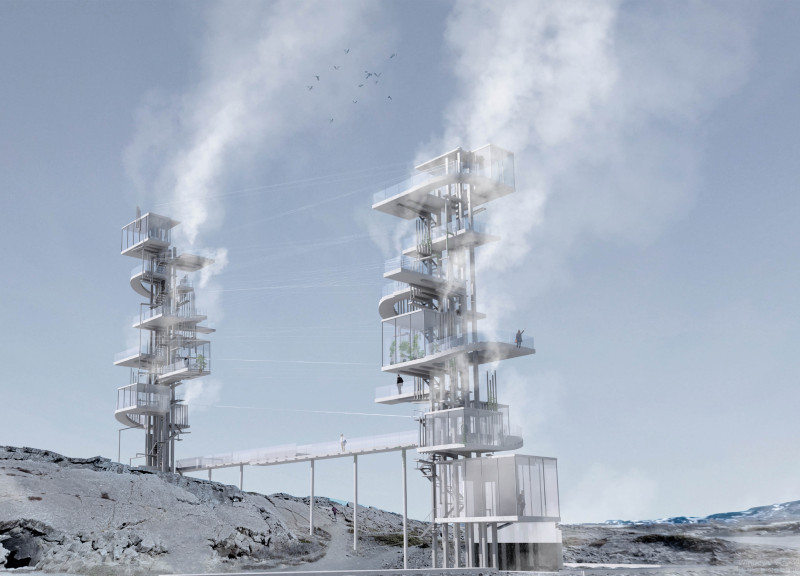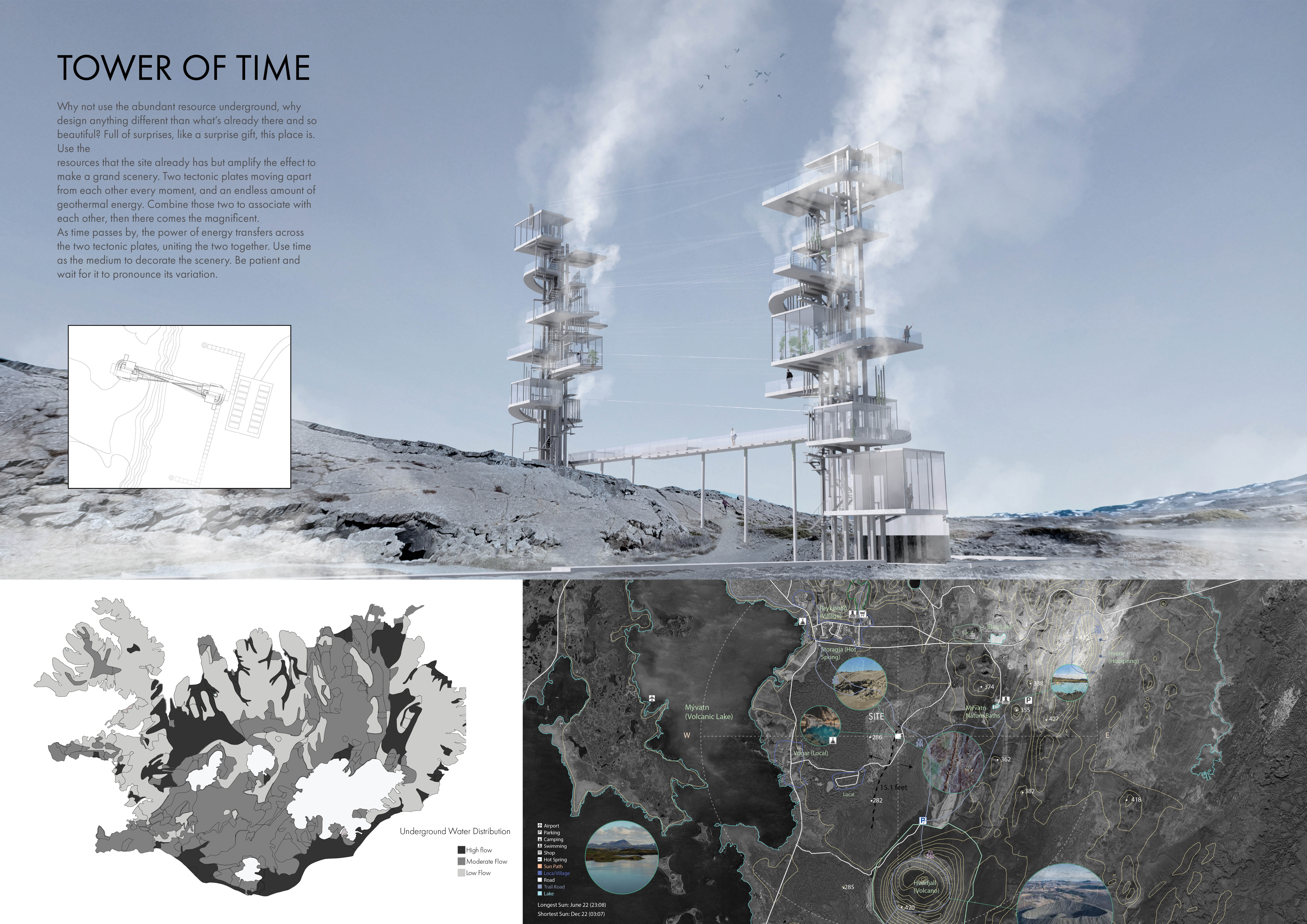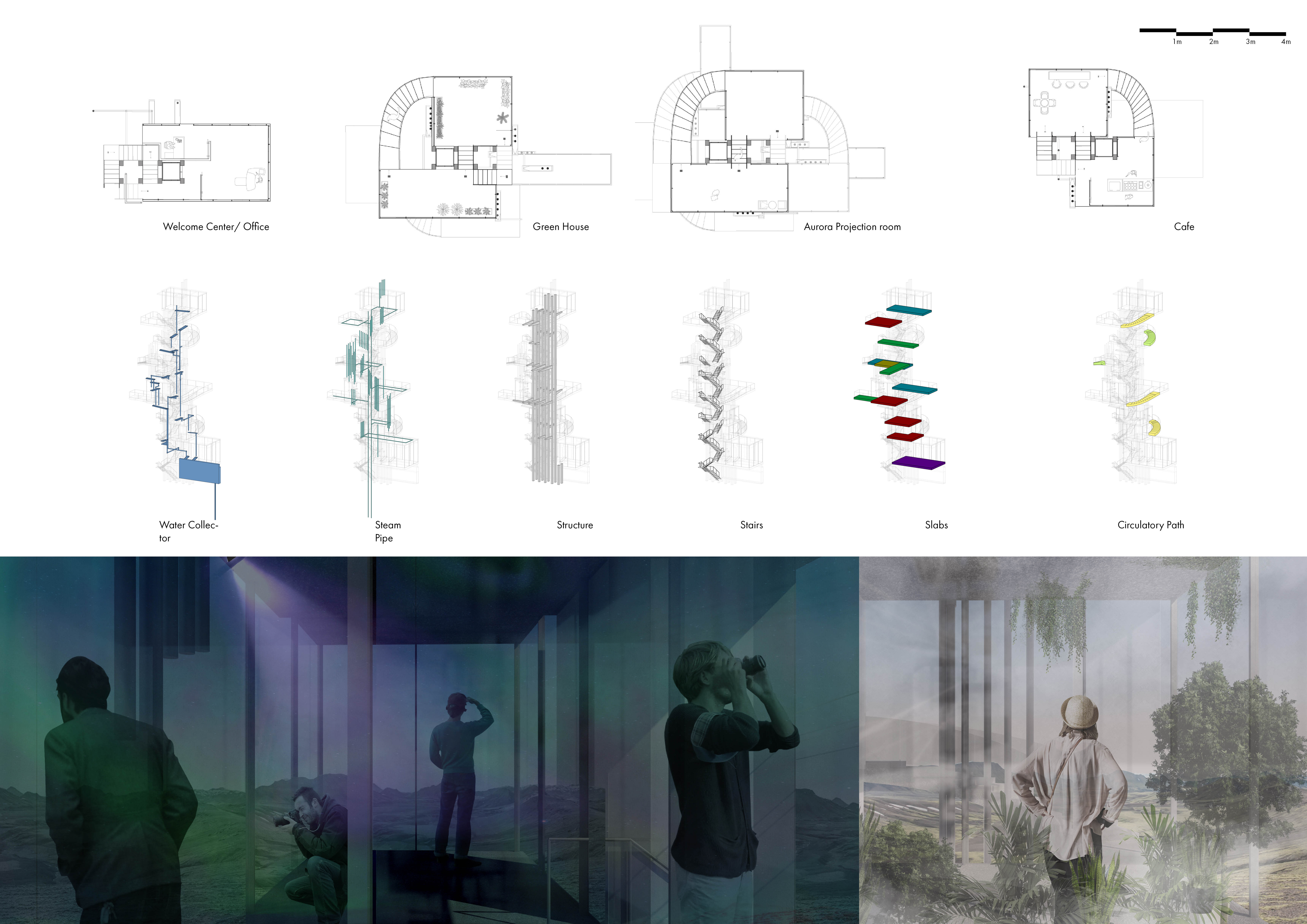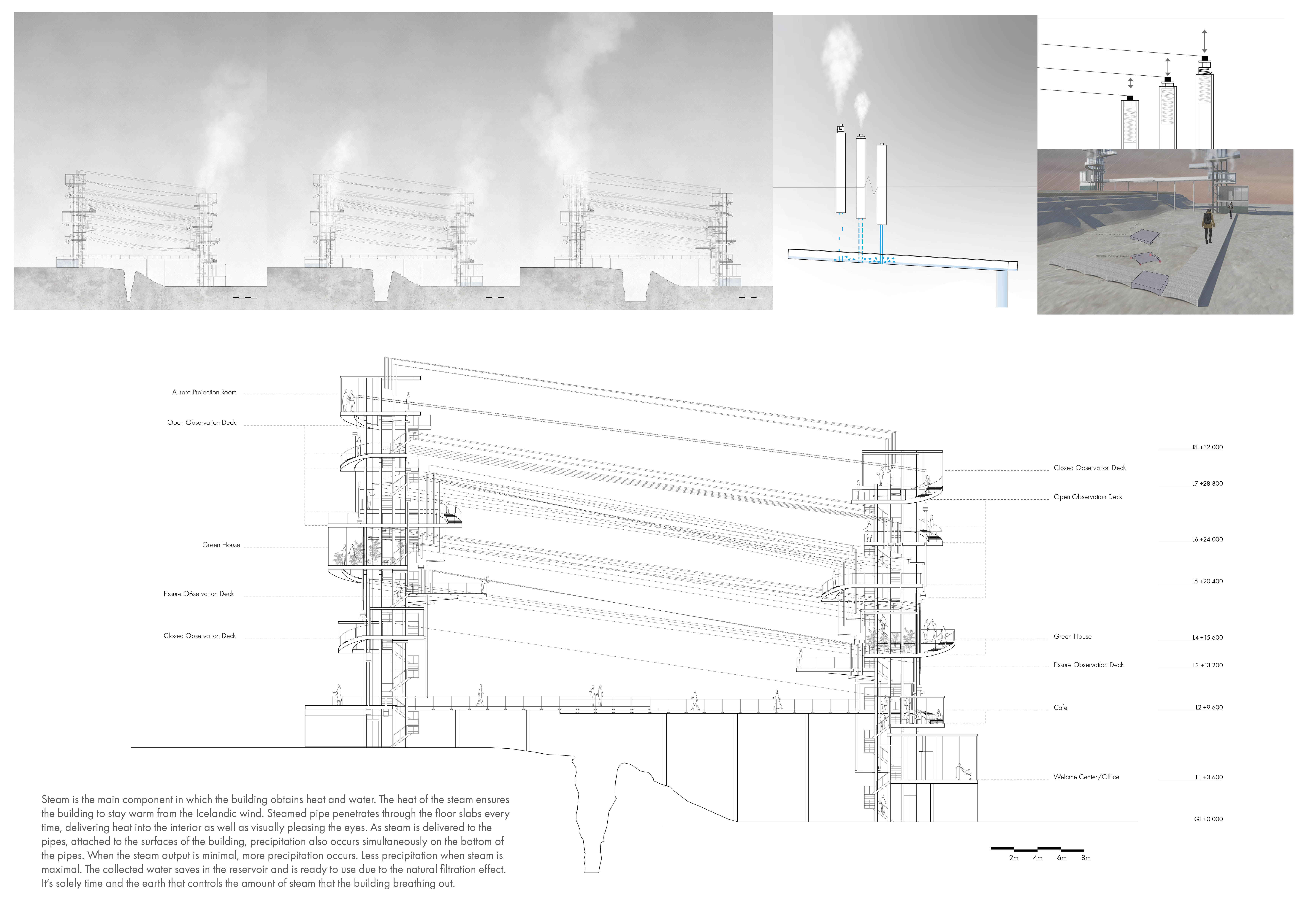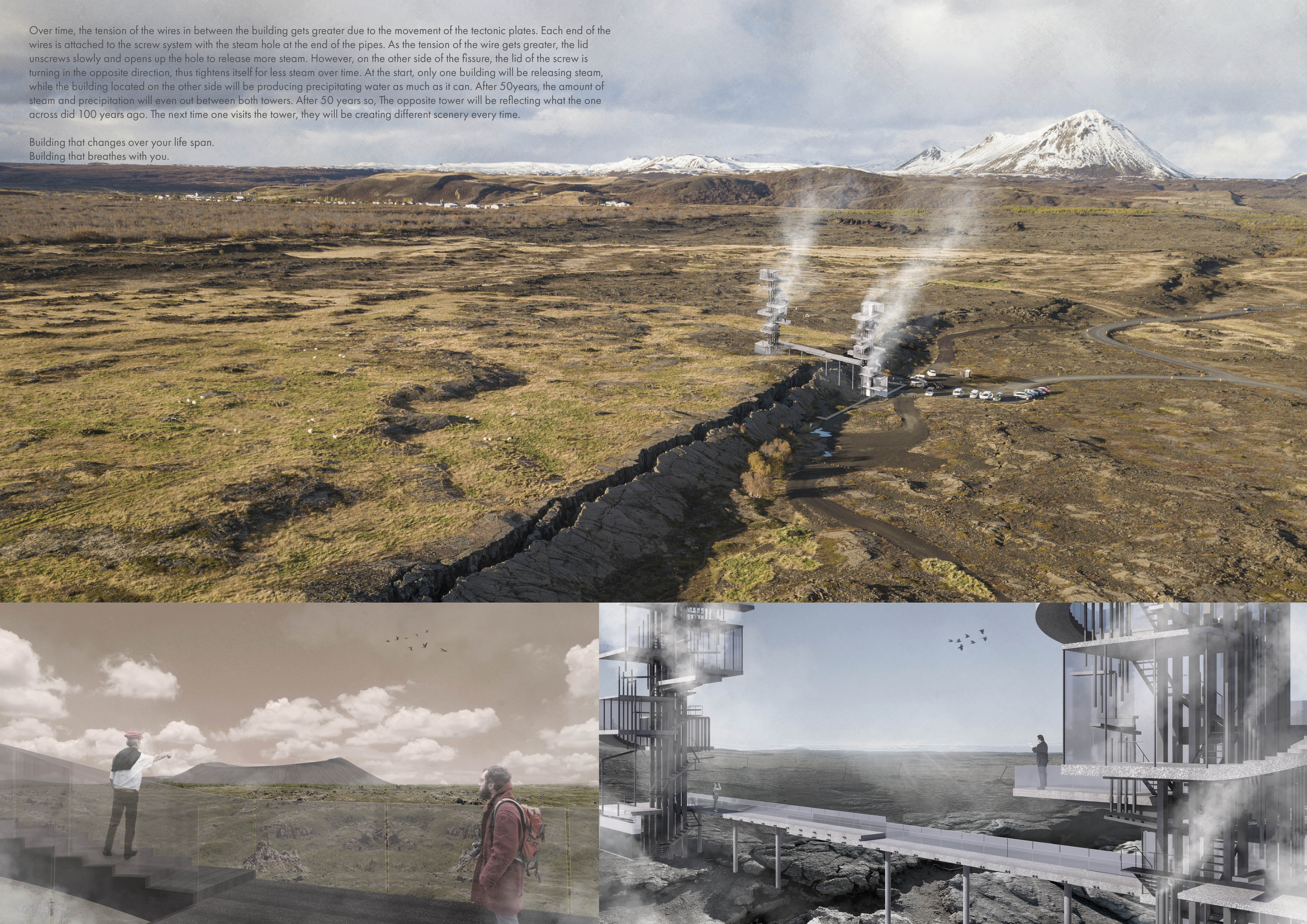5 key facts about this project
The design near Mývatn, Iceland, engages with the region's geothermal resources and unique geological features. It emphasizes the use of underground assets to draw attention to the natural landscape rather than changing it drastically. The aim is to create a space where the building interacts with the environment, shaped by the continuous movement of two tectonic plates that are ever so slowly drifting apart.
Geothermal Resource Utilization
Central to the design is the focus on geothermal energy. By tapping into the abundant resources beneath the surface, the building minimizes its impact on the landscape while celebrating its natural elements. Steam serves as a primary heating source, with pipes carefully placed throughout the interior. This method not only ensures warmth but also adds an interesting visual aspect to the overall design.
Water Management Strategy
The design includes a detailed underground water distribution system that sorts areas based on their flow rates. High flow sections are intended for essential functions like transportation and parking. Moderate flow areas accommodate recreational activities, such as camping and hot springs, while low flow sections manage local roads and trails. This thoughtful organization reflects a keen awareness of the site’s water resources and promotes responsible use.
Structural Dynamics
The arrangement of the buildings demonstrates an innovative understanding of structural dynamics. Wires connecting the two structures adapt to the movements caused by tectonic activity. A screw system helps regulate steam release, allowing one building to exhale steam while the other collects rainwater. This relationship creates a continuous interaction between the two, fostering a symbiotic environment that evolves gracefully over time.
An important detail is the network of visible steam pipes that crisscross the surfaces. These pipes facilitate the condensation process that generates precipitation. Water collected from this system is reused, showcasing a practical, sustainable approach while emphasizing the connection between architecture and natural processes.


